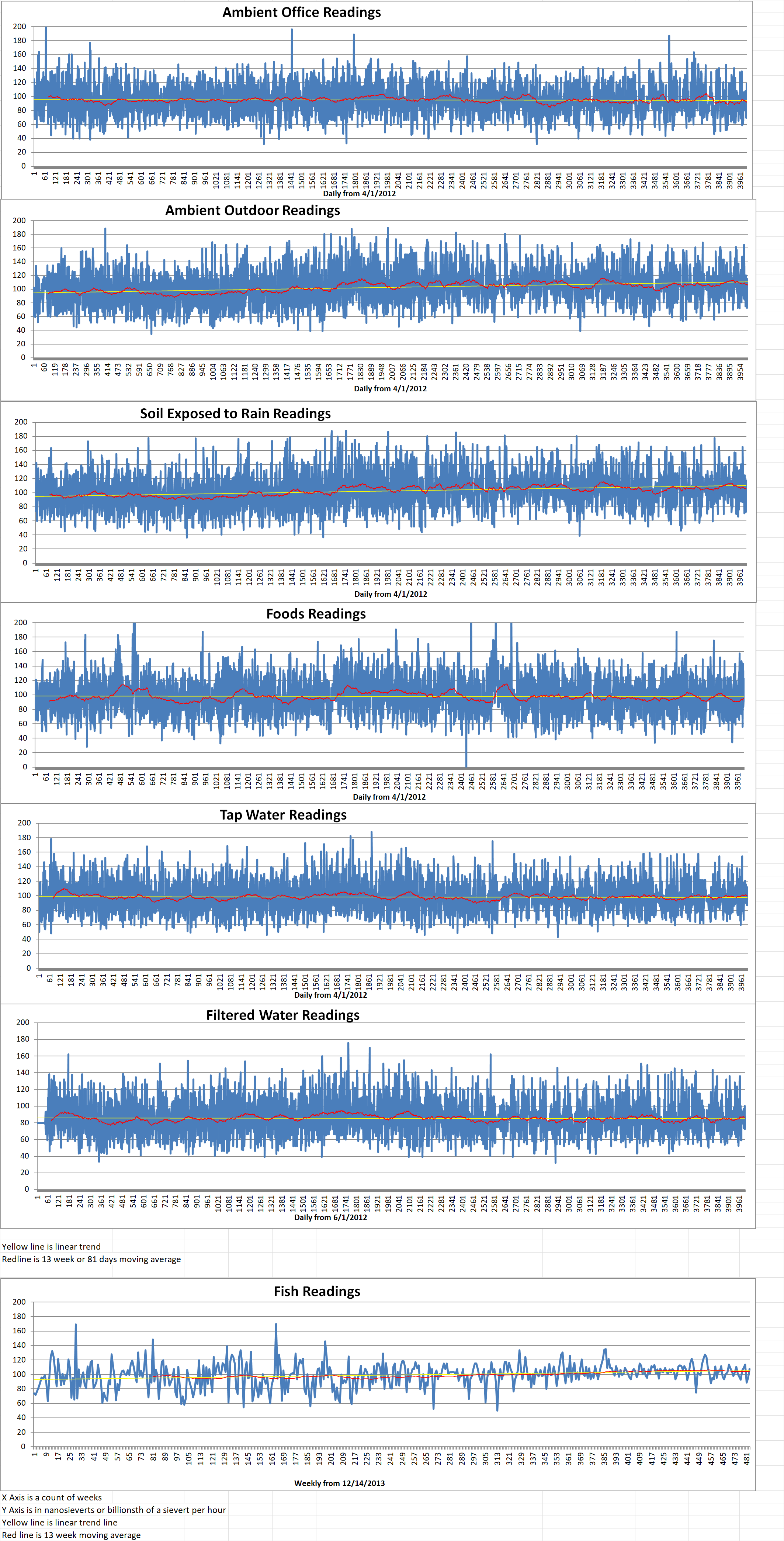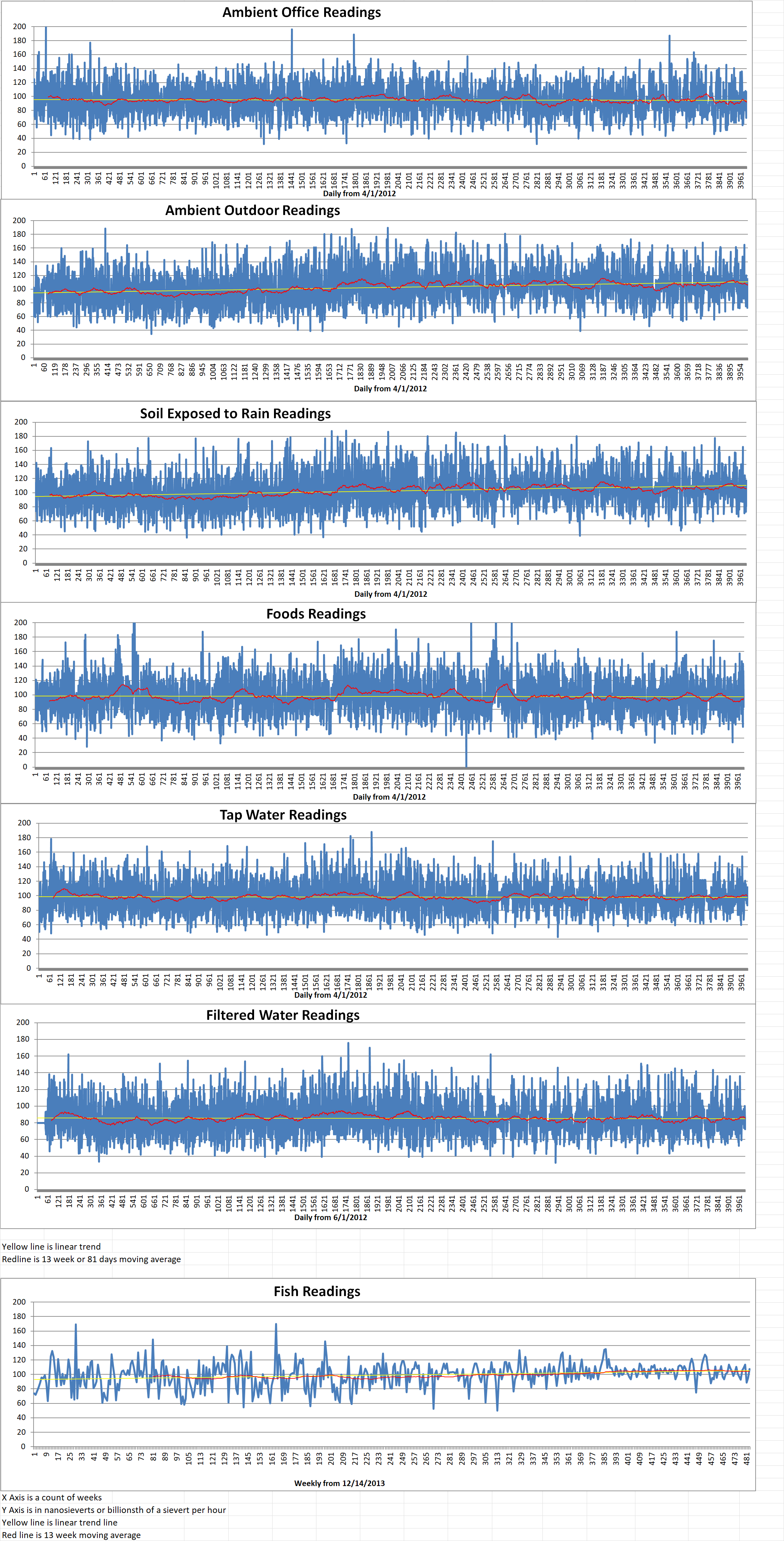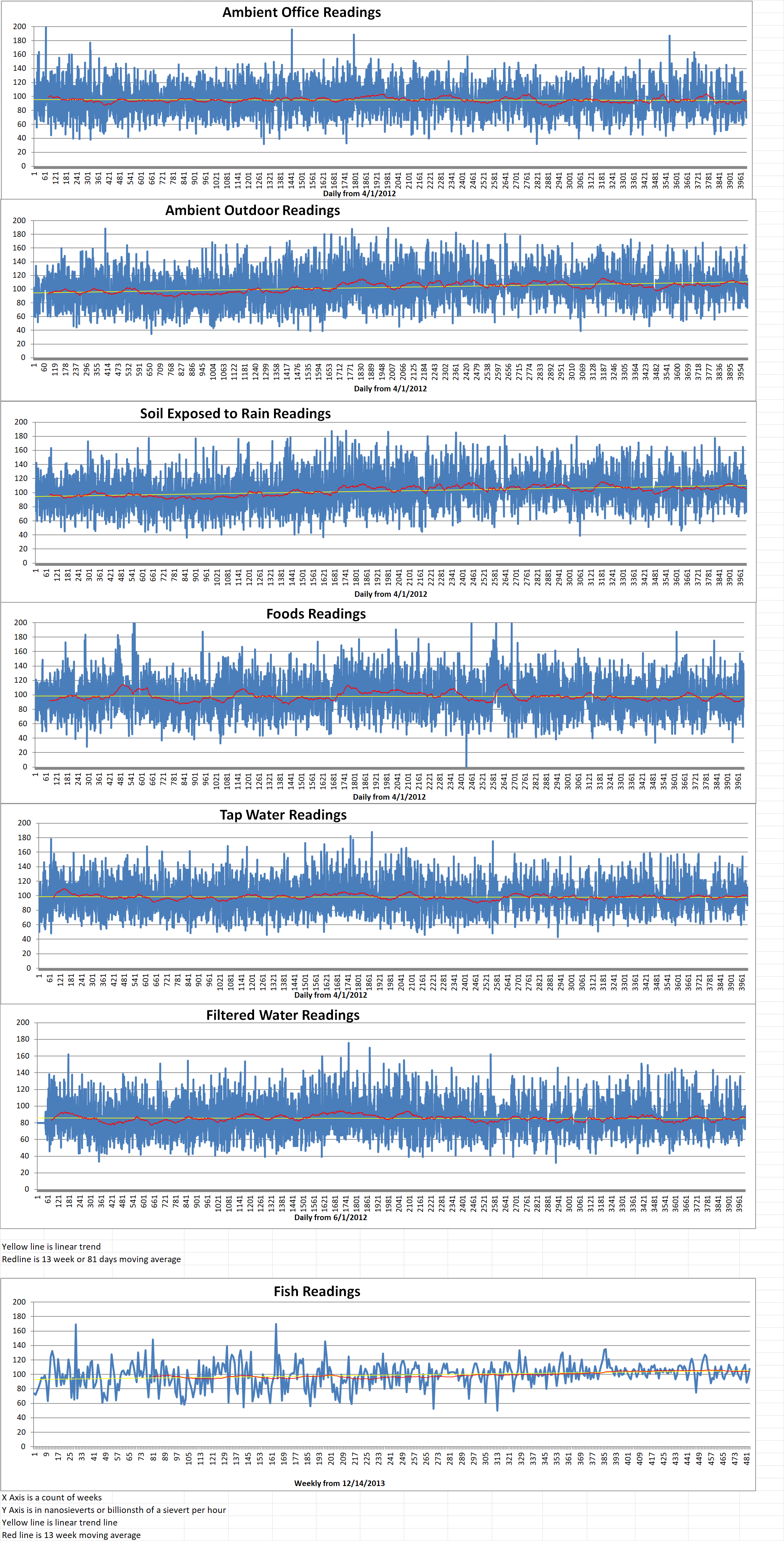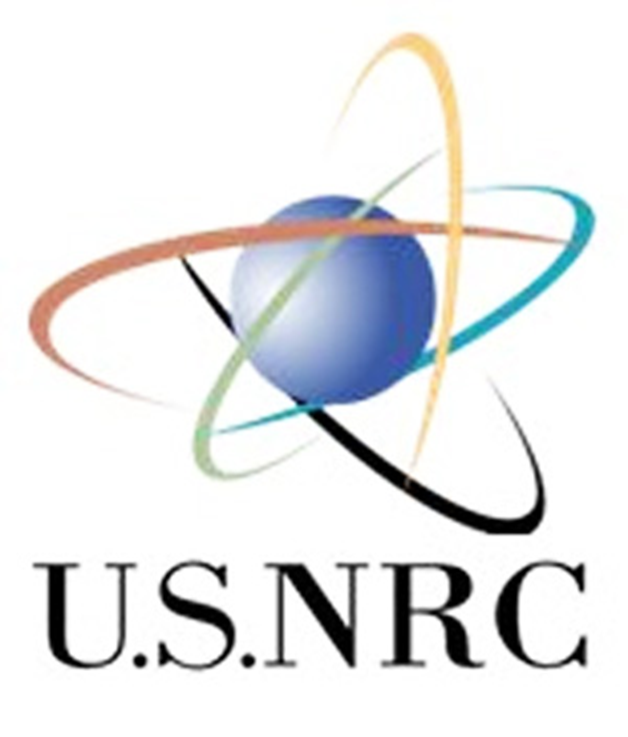Blog
-

Geiger Readings for June 09, 2023
Ambient office = 119 nanosieverts per hour
Ambient outside = 91 nanosieverts per hour
Soil exposed to rain water = 91 nanosieverts per hour
Red bell pepper from Central Market = 122 nanosieverts per hour
Tap water = 104 nanosieverts per hour
Filter water = 87 nanosieverts per hour
-

Nuclear Reactors 1233 – Current Small Modular Reactors Plans – Part 2 of 3 Parts
Part 2 of 3 Parts (Please read Part 1 first)
If Dominion proceeds with plans for an SMR, it will have to balance the enthusiasm of Southwest Virginia with the fact that it could simply site an SMR one of its existing nuclear facilities in North Anna and Surry. This would certainly be less expensive and raise fewer objections.
Historically, conservatives have been most interested in the deployment of nuclear power in the U.S. Currently, more Democrats have been embracing nuclear power, including the Biden administration. They see it as a way to replace fossil fuels on a larger scale than solar or wind. Criticisms of nuclear energy remain the high cost, the long time needed and the potential for horrible accidents. The renewed interest in nuclear power is driven by the concern that renewables may not be able to supply the entire power grid on a reliable basis.
A utility in the Canadian province of Ontario broke ground in December for an SMR at an existing nuclear site in Darlington which is forty-two miles east of Toronto. It is expected to be completed by 2028. Currently, it is the only SMR under construction in North America.
The Tennessee Valley Authority (TVA) signed a four-way agreement in March with the Ontario utility, GE Hitachi Nuclear Energy, and a Polish company to design and finance an SMR in Oak Ridge. TVA officials told Knox News that they were partnering with the Ontario Power Generation because that project is up to twenty-four months ahead. The TVA will be able to gain invaluable experience from their involvement.
Dow Incorporated recently announced plans to build four SMRs to power one of its plastic plants on the Gulf Coast of Texas. Dow hopes to have construction taking place in 2026 and be finished by 2030. The Dow project is an example of the Biden Administration’s support for nuclear power. The U.S. Department of Energy (DoE) is providing up to twenty-five million dollars for engineering work as part of the department’s Advanced Reactor Demonstration Program. Dow said that the reactors, when operational, would eliminate four hundred and forty thousand metric tons of carbon emissions per year and make the plant net zero for carbon.
Nuscale Power is the Oregon company which currently has the nation’s only authorized design for an SMR. The company has signed a memorandum of understanding with Nucor based in Charlotte, North Carolina, to explore using small modular reactors to power Nucor’s steel mills.
Green Energy Partners has announced plans to build data centers next to Dominion’s Surry nuclear power station. Someday, they hope to use SMRs to power the data centers. Data Center Frontier reported that “The plan is to run the data centers on existing power sources, then, using the revenue from the data centers, build to a hydrogen production facility and four to six 250 megawatt SMRs to meet the long-term needs of the data centers and other facilities on campus.”
This plan is not unusual. A Swedish data center company is also looking to use an SMR to power its facilities near Stockholm, according to Data Center Dynamics. The CEO of the company said, “I am absolutely prepared to go into it. Ten years from now it is quite possible.”
Please read Part 3 next -
Nuclear News Roundup June 08, 2023
France says nuclear power is ‘non-negotiable’ euractiv.com
Deep borehole demo work to be conducted in Norway world-nuclear-news.org
WIPP ventilation shaft reaches new depths world-nuclear-news.org
Government Gives €100 Million To Train Nuclear Workers, Boost Innovation nucnet.org
-

Geiger Readings for June 08, 2023
Ambient office = 106 nanosieverts per hour
Ambient outside = 84 nanosieverts per hour
Soil exposed to rain water = 81 nanosieverts per hour
Mango from Central Market = 92 nanosieverts per hour
Tap water = 111 nanosieverts per hour
Filter water = 87 nanosieverts per hour
-

Nuclear Reactors 1232 – Current Small Modular Reactors Plans – Part 1 of 3 Parts
Part 1 of 3 Parts
There has been a great deal of publicity about the development of small modular reactors. Many projects are being launched across the world to deploy these small nuclear reactors which generate three hundred megawatts or less of electricity. They are to be manufactured in factories which lowers the cost and increases quality control. They are reputed to be safer than the gigawatt plus huge conventional nuclear power reactors. However, they will require some advanced technology and still produce spent nuclear fuel which will need to be dealt with. Here are some of the current projects in the works.
Last month, Perdue University and Duke Energy Indiana released a report that suggests that a small modular reactor (SMR) be built on or near the Perdue campus to “achieve a carbon-free future with reliable energy twenty four hours a day.
This does not mean that an SMR will be constructed in West Lafayette, Indiana, in the near future. The released study recommended more study and said that it might be the late 2030s before such a reactor is operational because of the lengthy nature of getting a nuclear reactor licensed.
Nonetheless, this is just another example of the growing enthusiasm for SMRs. Governor Glenn Youngkin wants to add SMRs to Virginia’s fleet of energy generators, specifically in Southwest Virginia.
SMRs have existed for a long time and many of those were built in Virginia. The USS Nautilus was the world’s first nuclear-powered submarine. The Nautilus set sail from Groton, Connecticut in 1954. The world’s first nuclear-powered aircraft carrier was the USS Enterprise. It was commissioned at Newport News in 1961. The U.S. Navy currently has eighty-six nuclear-powered vessels, including all eleven U.S. aircraft carriers. All of these were built in Newport News. Six of them were homeported in Hampton Roads. There are also small research reactors in Virginia including those at Virginia Tech and the University of Virginia.
What is new is the increasing interest in small commercial nuclear reactors. Traditionally, nuclear energy has taken a lot of time and a lot of money to deploy. The hope generated by SMRs is that they will be simpler and cheaper to build. Currently there are only two commercial SMRs operating in the world. One of these is in Russia and the other is in China.
In 2022, Dominion Energy formally expressed interest in adding SMRs. Last year, Governor Younkin embraced the concept and announced that he wants Virginia to be the first state in the U.S. to deploy an SMR in Southwest Virginia. However, it is not his decision to make. Siting for a nuclear reactor would be up to a utility company and all of the regulatory agencies involved. Southwest Virginia politicians have made it clear that they would really like an SMR in their part of the state and have been at the forefront of advocating an SMR. Earlier this week, a report paid for by the GO Virginia Economical Development Board for Southwest Virginia identified seven potential sites for an SMR in the region containing Dickenson, Lee, Scott and Wise counties and the City of Norton.
Please read Part 2 next -
Nuclear News Roundup June 07, 2023
US and Iran both deny report of nearing interim nuclear deal reuters.com
NY Senate Unanimously Passes Bill to Block Radioactive Nuclear Waste Dumping in Hudson River foodandwaterwatch.org
US-UK declaration includes nuclear partnership world-nuclear-news.org
‘Minor’ leak at nuclear submarine dock bbc.com
-

Geiger Readings for June 07, 2023
Ambient office = 88 nanosieverts per hour
Ambient outside = 115 nanosieverts per hour
Soil exposed to rain water = 117 nanosieverts per hour
Jalapeno pepper from Central Market = 96 nanosieverts per hour
Tap water = 89 nanosieverts per hour
Filter water = 74 nanosieverts per hour
-

Radioactive Waste 906 – NRC Investigating Incident At Energy Northwest Nuclear Plant – Part 2 of 2 Parts
Part 2 of 2 Parts (Please read Part 1 first)
One pipefitter involved in the 2021 incident was initially found to have an internal dose of nine hundred and sixty millirems and the second had an internal dose of seven hundred and eleven millirems.
The NRC mandates a limit of five thousand millirems per year for both external and internal radiation. EN sets a more conservative limit for exposure to two thousand millirems per year.
The radiation protection technician received an internal dose of fourteen millirem. Eighteen other workers had unintended uptakes of less than one millirem after walking past the area of airborne radioactive particles as they evacuated the room.
The updated NRC information claimed that as the two pipefitters left the heat exchanger room, they were frisked by radiation protection staff “and the instrument readings went off-scale high.” They were then escorted to the personal contamination monitors which were triggered. This indicated that there was radioactive material on or in the workers.
After multiple showers and scans of the personnel contamination monitors, EN confirmed that the pipefitters had internal uptake of radioactive materials. The two workers were sent to initiate the whole-body count process. Initial counts confirmed that they had inhaled or ingested cobalt 58 and cobalt 60 radionuclides. However, there was indication from inspections of the pipe that was cut that plutonium 239 and plutonium 240 contamination was possible in the incident. However, that information was not used to assess worker’s exposure.
According to the NRC report, EN’s procedures for internal dose assessment were incomplete, failed to provide clear direction and did not fully address all radionuclides that could have contaminated the pipefitters. Radiation dose is a measure of the amount of radiation absorbed that accounts for the type of radiation and its effects on particular organs. The two pipefitters had their urine tested only once and no fecal samples were collected after the incident.
According to the most recent NRC inspection report, “In conclusion, not only did the licensee (Energy Northwest) fail to implement the most appropriate sampling methods to detect the level of hard-to-detect radionuclides from the intake, including alpha emitters, but they did not take any additional samples to suitably establish trends and elimination rates of these radionuclides.” EN also failed to effectively take air samples in the workers’ breathing space during the incident.
According to the NRC report, the EN procedures were inadequate, but the EN did not have the equipment or personnel available to address the level of contamination and assess the dose within workers’ bodies.
EN said that they would provide a written reply to the NRC in response to notification of the preliminary white finding related to workers uptake of radioactive materials.
For the final white finding of the incident, EN Northwest will undergo a supplemental NRC inspection to demonstrate that the causes of the incident are understood and have been resolved.
EN said that no contamination left the building where employees were working during the incident or put the health and safety of the public at risk.
Schuetz said, “In this instance, we did not live up to that standard, and we will work with the NRC to complete the follow-up inspection to be able to return Columbia Generating Station to top industry performance.” -
Nuclear News Roundup June 06, 2023
What’s in the Trump indictment: US nuclear secrets and files kept in shower – BBC News bbc.com
EU to try again for renewable energy deal after nuclear row reuters.com
Japanese government seeks fishing industries understanding over nuclear plant water release japantimes.co.jp
‘West can’t stop Iran from getting nuclear weapon,’ ayatollah says jpost.com
